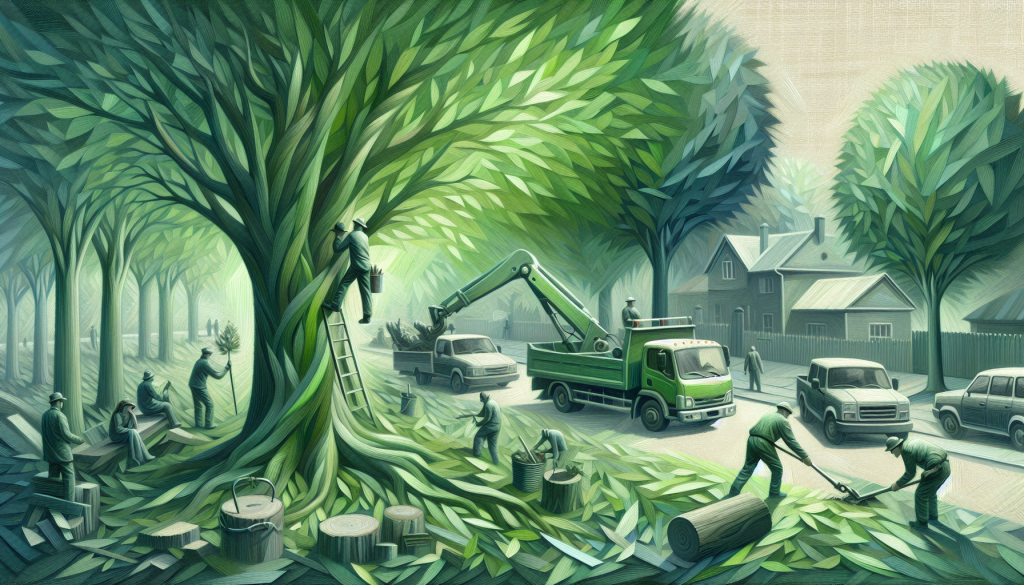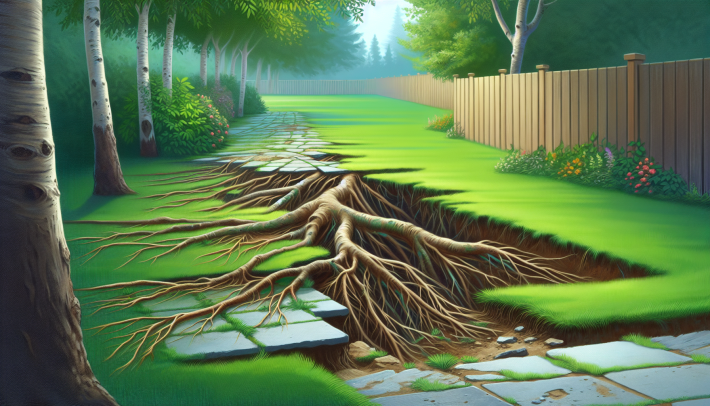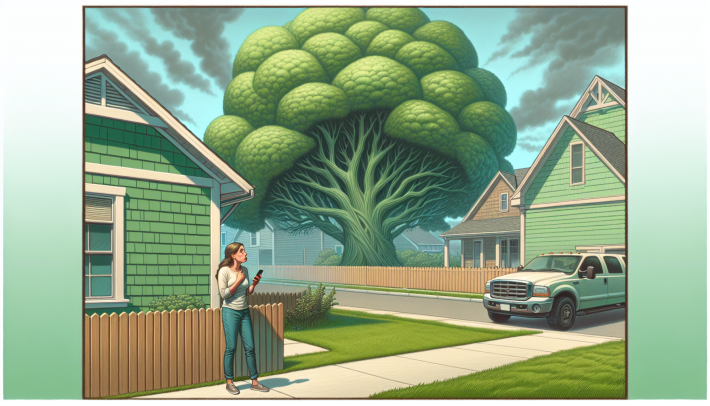Can a Utility Company Cut Your Trees Without Permission

Understanding Utility Company Rights
Knowing about what’s what with your property and the utility folks can save you a headache. Let’s get to grips with the power companies’ rights, especially when it comes to cutting down trees on your land.
Easements and Tree Cutting
Utility outfits usually have this thing called an easement—even though it sounds like a fancy word for making life easy, it’s all about giving them the right to roll onto your land for work. If your place is part of an easement, these companies can chop down trees without ringing your bell. Why, you ask? They gotta keep those snarled wires free from tree branches and prevent outages that can leave you in the dark or tackle other nasty surprises (JustAnswer).
Here’s a quick look at how easements relate to tree cutting:
| Thingamajig | What it Means |
|---|---|
| Easement | Legal permission for utility companies to mosey onto your land for their services. |
| Cutting Trees | No need for a heads-up; they can cut trees with an easement in place. |
| Why? | Ensures smooth maintenance and guards against the peril of sagging utility lines. |
This right keeps trees and wires from duking it out, especially those electrical and phone lines that can’t handle tree hugs (Ohio Farm Bureau).
Rights to Maintain Utility Infrastructure
It’s the utility company’s job to make sure their setup doesn’t crash and burn. They might trim or get rid of trees growing too close to power lines. Whether they just give a quick trim or pull the whole thing out depends on where a tree’s growing and its health status. Those old or risky trees? Gone. They say prevention’s better than power outages or worse (Townsend Tree).
Utility companies gotta do what they gotta do to keep things running smoothly, which can include tree operations. Knowing this can help if you find yourself disagreeing over who has rights to what in your yard. If you want the lowdown on more tree-related legal stuff, like hacking away at your neighbor’s trees without asking, it’s smart to chat with a legal pro.
Tree Trimming Regulations
Let’s chat about tree trimming, especially when utility companies roll up their sleeves and get involved. Knowing what’s what not only keeps us out of squabbles but also helps us sort out tree maintenance around power lines with less fuss.
Tree Trimming Practices
Utility crews have the go-ahead to give your greenery a haircut — all in the name of preventing power line mischief. As explained by Townsend Tree, they’ve got qualified folks managing these chops through easements. So, whether it’s a trim or a full chop, they’ve got it covered.
Out there, keeping a good 10-foot buffer around power lines is the norm. It’s like giving the trees a safety net to grow wild and free but still steer clear of power interruptions, thanks to those federal health and safety rules.
| Trimmed Tree Clearance | Recommended Distance |
|---|---|
| Around Power Lines | Minimum of 10 feet |
Utility Company Responsibilities
Utility folks are all about keeping things running smoothly and safely. When they snip at branches, they aim to keep it stressless for the trees — nobody likes a grumpy tree! They’re good with trimming tools, keeping trees healthy while making sure we have our utilities up and running.
But when storms go wild and blow branches everywhere, companies like AEP Ohio aren’t clearing your yard afterward (AEP Ohio). That clean-up task? It’s on us homeowners. To keep their trimming visits to a minimum, how about we beat them to it and tidy up our foliage once a year? And hey, giving the electric company a heads-up about potential tree tangles isn’t a bad idea either.
By getting wise to utility company roles in tree trimming, we can handle neighborhood tree drama like pros. If you’re itching for more advice on tree squabbles, check out what can I do if my neighbor has a dangerous tree or how to negotiate tree removal.
Legal Considerations
Property Owner Rights
Owning property comes with a treasure chest of rights, but understanding them can seem trickier than finding a needle in a haystack. Especially when it comes to utility companies and their chainsaw-happy tendencies. Yep, they sometimes can play lumberjack with our precious trees without asking if there’s an easement in place. An easement is like giving them a hall pass for our land, so they can sneak in to tweak their equipment (JustAnswer).
But, they don’t get to throw a tree-trimming party just anywhere. Those rights of way they have? They’re meant to keep power lines safe and service uninterrupted (Ohio Farm Bureau). So, it’s smart to peek at our deeds and see if any easements are lurking there, affecting how we can deal with our beloved greenery.
Legal Recourse for Disputes
If a utility company’s gone and rolled over our trees without checking in, we’re not powerless. We can gather some evidence—think photos, utility bills, or any easement document stashed away. This kind of stuff can be gold when hashing out disputes, especially if things start heating up.
Table: Legal Recourse Options for Tree Cutting Disputes
| Recourse Option | Description |
|---|---|
| Contact the Utility Company | A good starting point is calling up the company to talk things over and see if there’s a fix. |
| File a Complaint | If that doesn’t work, filing a complaint with the Public Utilities Commission might shake things up. |
| Seek Legal Advice | Chatting with a property law attorney can clue us in on our rights and what we can actually do. |
| Mediation | Sometimes sitting down with a mediator can help everyone walk away happy—or at least less ticked off. |
For more tips on handling these sorts of tree-related tussles, we can always check out resources like can you sue someone for cutting down trees on your property or what can I do if my neighbor has a dangerous tree. Being clued-up about our rights and the legal rules around them puts us in the driver’s seat, ready to act if someone messes with our fine forest.
Customer Communication
Staying in the loop with your utility company is like having a comfy blanket—it just feels right, particularly when it comes to the never-ending saga of tree trimming. Knowing how these companies ping us when they decide to go all Paul Bunyan on the neighborhood trees can definitely smooth any bumps in the road.
Notification of Tree Trimming
Utility folks usually give us a heads-up before they start wielding their shears around our properties. Even if they don’t have to do this by law, spreading the word is kind of their unofficial job. They may pop a letter into our mailbox or hang a door hanger like it’s a fancy Christmas wreath. These little nuggets of info typically include a handy contact number for when we want to know who thought trimming was a good idea during nap time. But let’s face it, when a big storm throws a tantrum, advance notice might just not happen (Office of the Ohio Consumers’ Counsel).
| Notification Method | Description |
|---|---|
| Mailed Letters | Your regular snail mail, spelling out the trimming agenda. |
| Door Hangers | Notices left on your door, like those pizza menus, but about tree work. |
In Ohio, they actually suggest giving a ring to the tree trimming team before they get snippy with your branches. It’s a golden opportunity to get the 411 on what’s coming and raise any red flags. If we’re feeling let down by their answers, big guns like American Electric Power or the Public Utilities Commission of Ohio just might lend an ear (JustAnswer).
Customer Inquiries and Concerns
The utility company should be our go-to for any tree trimming questions or worries. It’s our right to know why the trimming is happening, what methods they’re thinking of using, and where we stand legally. If you’ve got questions sprouting, don’t sit on them! Bust out that notice, find the number, and ask away.
Keeping a chat going with the utility company and knowing our rights means our leafy friends get a fair trim and we keep things cool. For a deep dive into what’s fair and what’s not in the tree league, check out reads like can you sue someone for cutting down trees on your property and how to negotiate tree removal.
Self-Preventative Measures
Let’s chat about how we can keep our beloved trees safe from those eager utility folks ready with chainsaws. A bit of knowledge can go a long way in helping our green buddies thrive without the fear of being chopped because of some regulations.
Avoiding Utility Tree Trimming
One handy trick to dodge the clipping crew is taking care of our trees ourselves. If we keep our trees in check, we can side-step the need for outside interference. The game plan is simple: trim those wandering branches before they flirt with power lines. The Office of the Ohio Consumers’ Counsel points out that regular trimming can spare us a lot of hassle from utility workers with itchy trigger fingers.
| Handy Habits | Do It This Often |
|---|---|
| Clip branches near power lines | Once a year |
| Keep an eye on tree growth | Every few months |
| Get an arborist’s advice if it looks tricky | When needed |
It’s good to remember that utility companies must keep a 10-foot buffer around power lines. But if we’re ahead of the game with our pruning, they’ll have fewer reasons to step into our gardens.
Customer Tree Trimming Options
We don’t have to do it all alone, though. When our trees are getting a little too cozy with power lines, we can always give our electric company a shout before they start their routine rounds. They might even lend a hand with tree removal, especially if the trees tend to grow back faster than we can cut ’em.
Now, if the DIY spirit takes over or we decide to call in the pros, here’re some good-to-know tips:
- Hire Qualified Tree Service Providers: They know the ropes and won’t let branches get in the way of the buzz without a fight. Plus, they’re clued in about legal stuff, which is important.
- Understand Tree Health: Good trimming keeps our trees healthy and less likely to get sick or cause trouble with those power cables.
- Consult Local Guidelines: Local rules might have a thing or two to say, especially when it comes to trees near the electricity infrastructure.
We’ve also got a couple of resources up our sleeves to handle pesky tree issues, like what to do if your neighbor’s tree is affecting you and how to negotiate tree removal. By thinking ahead and knowing our options, we can have happier trees and less meddling from utility companies, all while enjoying a well-kept yard.
Seeking Help
When our trees clash with utility companies, it’s time to call in some backup. Getting on top of these pesky situations starts by reaching out to the right people and maybe even getting a bit of legal advice.
Tapping into Regulatory Agencies
If our beloved oaks or pines are being trimmed without so much as a “how do you do?” from the folks running the wires, it’s time to pick up the phone. For us Ohio folks, the Public Utilities Commission of Ohio (PUCO) is the go-to. Say your beef is with American Electric Power (AEP), dial PUCO for some direction or even a little muscle if it’s needed. They keep an eye on the utility companies, making sure they’re doing what they should.
Utilities have a job to keep things safe and stable, sometimes that means a chainsaw might pay a visit to our trees. Each power company runs their plans by PUCO, showing what they’re up to with our greenery. By giving these guys a shout, we learn who holds the cards in this game.
Handy List of Who to Call:
| Agency | Why Reach Out |
|---|---|
| Public Utilities Commission | Report what’s shady in utility woods |
| Ohio Consumers’ Counsel | Learn about our rights and perks |
| Local Utility Company | Talk about the plan for our tree trimmings |
Getting Legal Backup
If our phone calls and emails don’t cut it, chatting with a lawyer might be our next step. Lawyers who’ve hung their shingle in property stuff can give us the lowdown on handling tree disputes with those power folk. Knowing our rights makes dealing with any bozo who yanks out our trees without asking a lot easier.
Here are some brain pickers:
- Is it possible to take someone to court for lopping off trees from our patch? (sue someone for cutting down trees on your property)
- What’s the move if our neighbor’s tree roots are creeping into our space? (neighbors tree roots damaging your property what to do)
Feeling solid about the dos and don’ts of tree law gives us the upper hand to keep our space just the way we like it.
By checking in with the right agencies and maybe a lawyer, we can face off with utility companies over tree issues, making sure we stay in control of our property.



